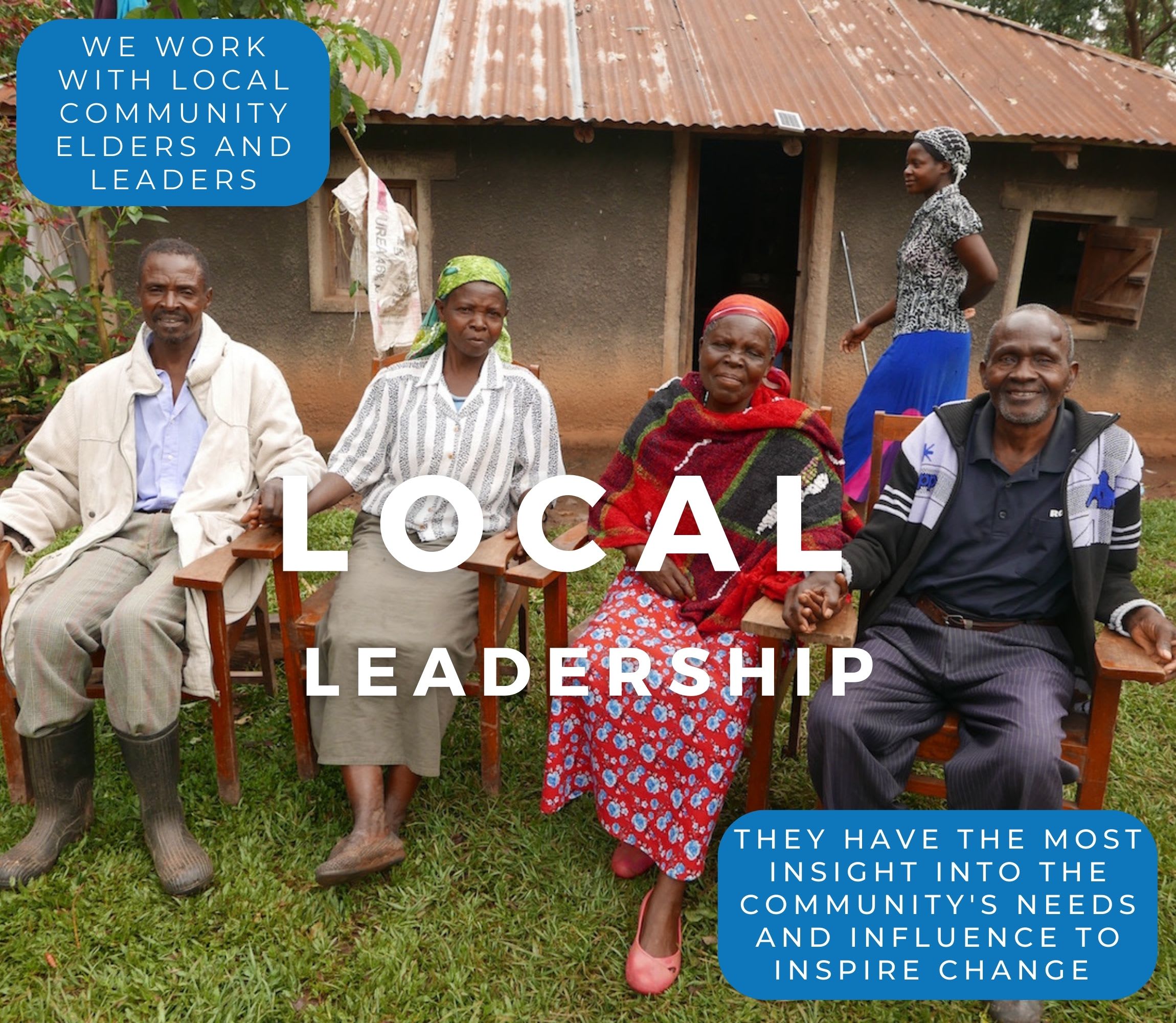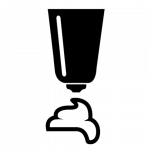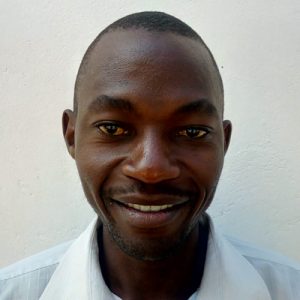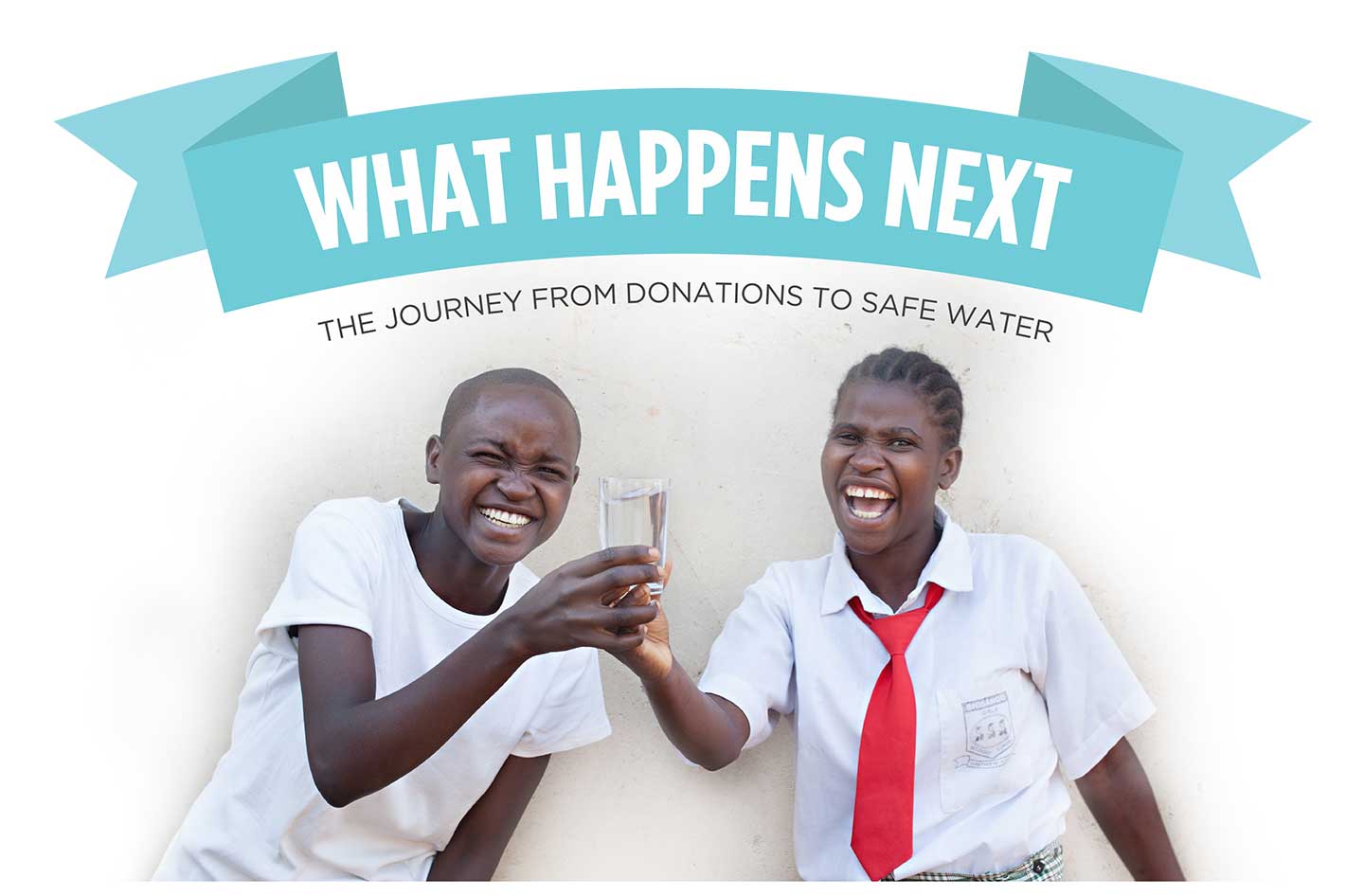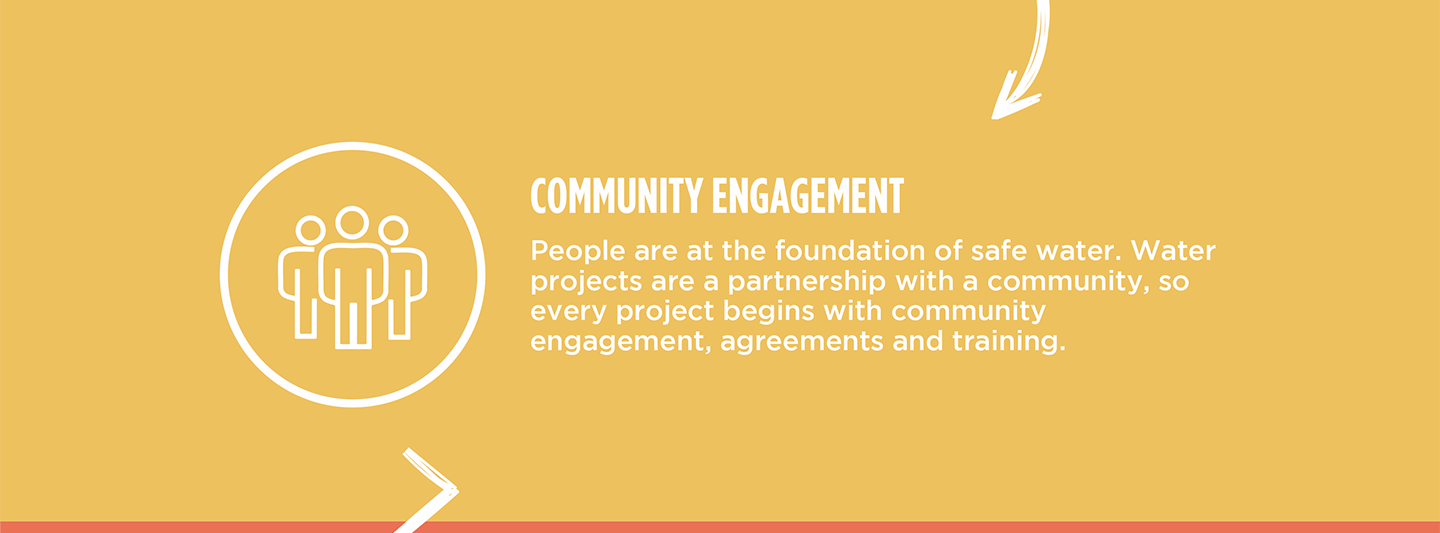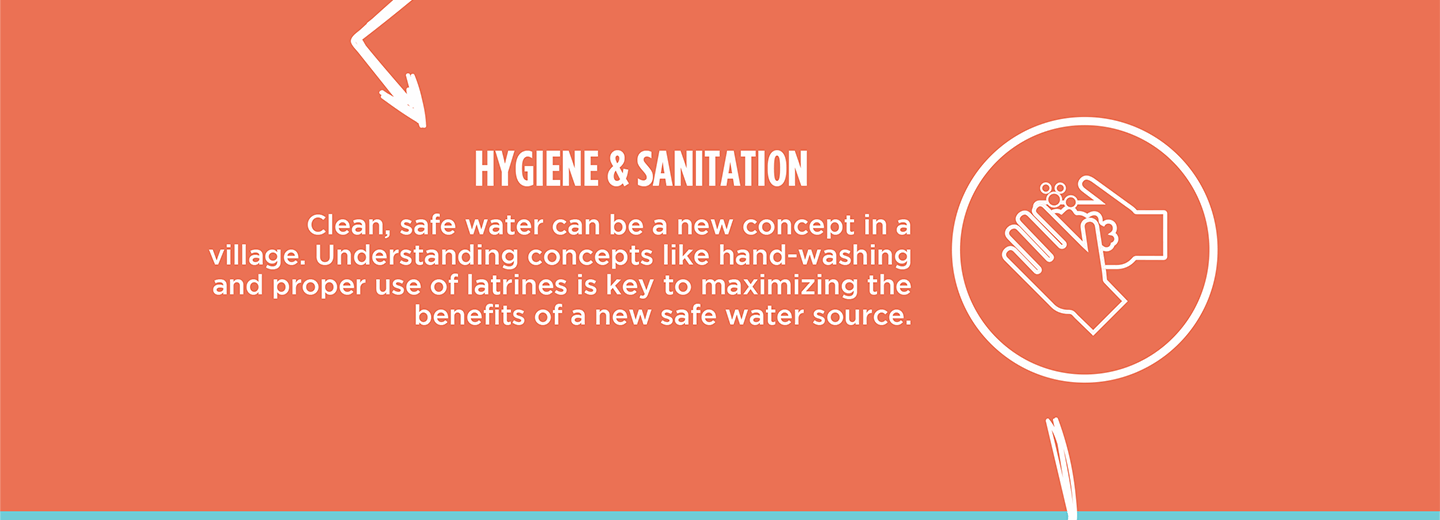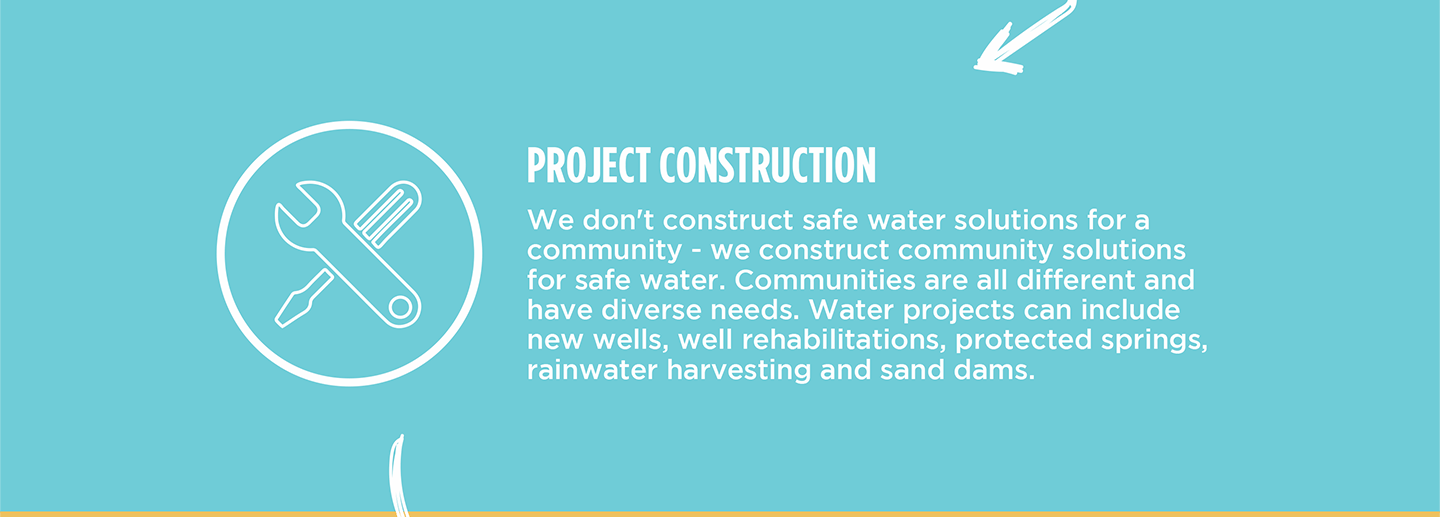May, 2024: Muyala Community Spring Protection Complete!
Muyala Community now has access to clean water! Thanks to your donation, we transformed their spring into a flowing source of naturally filtered water. We also installed a chlorine dispenser to provide added protection and trained the community on improved sanitation and hygiene practices. Together, these components will unlock the opportunity for community members to live better, healthier lives.

Community celebrating the newly protected spring!
"This waterpoint will act as a conflict resolution since community members have been fighting for a long time while collecting water due to inadequate accessibility. It will reduce unhealthy issues and improve our economy at large. There will be no time wastage at all. [The] flow rate [has] increased after protection, [so] I will spend minimal time fetching water, thus allowing me to have ample time to do my chores at home. My children, who are students, will use minimal time fetching water, giving them ample time to study which will improve their academic performance at school," shared Roselyn Osundwa, the 47-year-old chairperson of the water user committee.

Roselyne.
"[The spring] will help me get income. Being able to easily access water will help me generate an income by planting vegetables throughout the year, which I will sell and earn money from. It will bring [a] difference in their (her children's) lives because they will be able to have enough time to go and play with other kids, which will improve their social status. It will also give them ample time to study," continued Roselyn.
Children were just as excited as adults about the new water point.
"Being a pupil, I see myself creating ample time for my school work. This will help me improve my academic performance. Before [the] installation of this waterpoint, I wasted valuable time getting water. [Now] I [can] wash my clothes frequently and bathe at least twice a day. My parents will utilize this water by planting vegetables, so they can sell them and pay my school fees on time," said 11-year-old George.

George.
When asked how the waterpoint will impact his life, George said, "It will impact my learning at school because I will be at school on time, thus improving my performance. It will also help me create a strong relationship with my teachers because I will be much [more] available to my teachers. My teachers will be able to have time to teach me because I will be much [more] available at school because this waterpoint will reduce unhealthy issues which made me [be] absent at school."
Preparing for Spring Protection
Community members worked together to source and carry all locally available construction materials to the spring. These included bricks, sand, stones, and fencing poles. Some people also chiseled away at large rocks to break them into gravel. Because people have to carry most items by hand, the material-collection process can take anywhere from a few weeks to months.

Community members gathering materials.
When the community was ready, we sent a truck to deliver the remaining construction materials, including cement, plastic tarps, and hardware. Then, our construction artisan and field officers deployed to the spring to begin work. Individual households provided meals throughout each day to sustain the work team.
From Open Source to Protected Spring: A Step-by-Step Process
First, we cleared and excavated the spring area. Next, we dug a drainage channel below the spring and several runoff diversion channels above and around the spring. These help to divert surface contaminants away.

To ensure community members could still access water throughout the construction process, we also dug temporary channels around the construction site from the spring's eye. This allowed water to flow without disrupting community members' tasks or the construction work. Excavation created space for setting the spring's foundation, made of thick plastic, wire mesh, concrete, and waterproof cement.
After establishing the base, we started brickwork to build the headwall, wing walls, and stairs. Once the walls had grown tall enough, we began one of the most crucial steps: setting the discharge pipe. The discharge pipe needs to be positioned low enough in the headwall so the water level never rises above the spring's eye, yet high enough to allow room for the average jerrycan (a 20-liter container) to sit beneath the pipe without making contact, which prevents cross-contamination.
If we place the discharge pipe too high above the spring's eye, back pressure could force water to emerge elsewhere. Too low, and community members would not be able to access the water easily. We embedded the pipe using clay (or mortar when the clay is in short supply) and placed it at an incline to ensure water flows in the right direction.

In coordination with brickwork, we pitched stones on both sides of the spring's drainage channel. We then cemented and plastered each stone, forming the rub walls. These walls discourage people and animals from standing in that area, which could cause soil erosion and a clogged drainage area.

We then cemented and plastered both sides of the headwall and wing walls. These finishing layers reinforce the brickwork and prevent water in the reservoir from seeping through the walls. In turn, enough pressure builds in the reservoir box to push water out through the discharge pipe.
As the headwall and wing walls cured, we cemented and plastered the stairs and installed four tiles beneath the discharge pipe. The tiles protect the concrete from the falling water's erosive force while beautifying the spring and facilitating easy cleaning of the spring floor.
The final stage of construction is backfilling the reservoir box behind the discharge pipe. We cleared the collection box of any debris that may have fallen during construction. Then we redirected the temporary diversion channels back into the reservoir box, channeling water into this area for the first time. We close all other exits to force water through only the discharge pipe.
We filled the reservoir area with the large, clean stones community members had gathered, arranging them in layers like a well-fitting puzzle. We covered the rocks with thick plastic to minimize potential contamination sources, then piled enough dirt on top to compensate for future settling.
Community members transplanted grass onto the backfilled soil to help prevent erosion. The collection area was fenced to discourage any person or animal from walking on it. Compaction can lead to disturbances in the backfill layers and potentially compromise water quality.

Community members planting grass.
The construction process took about two weeks of work and patience to allow the cement and plaster to finish curing. As soon as the spring was ready, people got the okay from their local field officers to fetch water.

Community members at the completed spring.
We officially handed over the spring to mark the community's ownership of the water point. Happiness, thanksgiving, and appreciation were the order of the day, flowing in all directions.
Training on Health, Hygiene, and More
Together with the community, we found their preferred date for training while considering other community calendar events, such as the agricultural season and social events. We requested a representative group of community members to attend training and relay the information learned to the rest of their families and friends.
When the day arrived, facilitators Mercy, Joyce, Jacqueline, Adelaide, Faith, and Joy deployed to the site to lead the event. 11 people attended the training, including seven women and four men.

Training session.
We covered several topics, including community participation in the project; leadership and governance; personal, dental, and environmental hygiene; water handling and treatment; spring maintenance; the importance of primary health care and disease prevention; family planning; soapmaking; how to make and use handwashing stations; and the ten steps of handwashing.
During the leadership and governance session, we held an election for the newly formed water user committee leaders, who will oversee the maintenance of the spring. We also brainstormed income-generating activities. Community members can now start a group savings account for any future minor repairs to the spring and a cooperative lending group, enabling them to develop small businesses.
Field officer Mercy Wamalwa said that site management, the operation and maintenance of the waterpoint, were crucial topics. "This topic was vital as [it] would determine the longevity of the protected spring. Facilitators were able to name various parts of the spring and their functions. The group was shown how to handle all parts of the spring. [We] also [were] able to teach on when and how to properly clean the spring. The topic was [very] engaging as all participants posed a question. Their enthusiasm was detected from how they listened intently and with eagerness to get more information for the betterment of their lives."

Mohamed.
When asked the most interesting topic for him, 28-year-old Mohamed Shikuku responded, "The facilitator was able to train [us] on health promotion, as this would be the main activity of the water user committee, alongside keeping a lookout for any issues in the spring that need attention in terms of cleanliness and promoting good health and proper hygiene in the community. In this session, the facilitator had [us] answer questions, mostly [about our] daily activities, concerning personal and environmental health and hygiene. With the help of demonstrations, the group was educated on [the] proper methods of dental [hygiene] and handwashing. The facilitator demonstrated [to us] how to brush [our] teeth. The majority [of us] were mesmerized because it was a new style. [The] facilitator encouraged [us] to adopt the new style, to keep [our] teeth strong and healthy."
Conclusion
This project required a substantial collaboration between our staff, our in-country teams, and the community members. When an issue arises concerning the spring, the water user committee is equipped with the necessary skills to rectify the problem and ensure the water point works appropriately and there is guaranteed public access in the future. However, if the issue is beyond their capabilities, they can contact their local field officers to assist them.
Also, we will continue to offer them unmatchable support as a part of our monitoring and maintenance program. We walk with each community, problem-solving together when they face challenges with functionality, seasonality, or water quality. Together, all these components help us strive for enduring access to reliable, clean, and safe water for this community.
With your contribution, one more piece has been added to a large puzzle of water projects. In Kenya, Uganda, and Sierra Leone, we’re working toward complete coverage. That means reliable, maintained water sources within a 30-minute round trip for each community, household, school, and health center. With this in mind, search through our upcoming projects to see which community you can help next!
Thank you for making all of this possible!









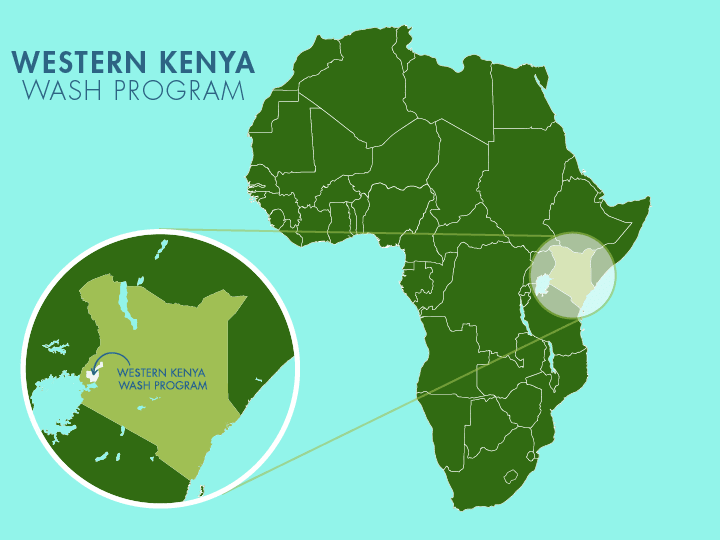
 Protected Spring
Protected Spring
 Rehabilitation Project
Rehabilitation Project

